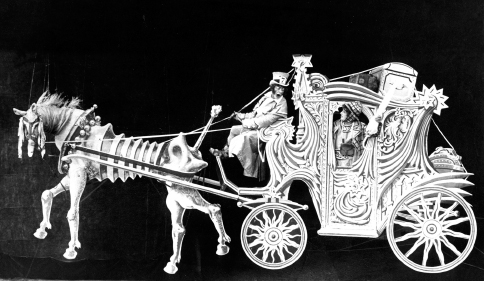The Introduction of Narrative
The shift to the mass medium stage for movies occurred with the introduction of narrative films: movies that tell stories. Audiences quickly tired of static films of waves breaking on beaches or vaudeville acts recorded by immobile cameras. To become a mass medium, the early silent films had to offer what books achieved: the suspension of disbelief. They had to create narrative worlds that engaged an audience’s imagination.

Some of the earliest narrative films were produced and directed by French magician and inventor Georges Méliès, who opened the first public movie theater in France in 1896. Méliès may have been the first director to realize that a movie was not simply a means of recording reality. He understood that a movie could be artificially planned and controlled like a staged play. Méliès began producing short fantasy and fairy-tale films—including The Vanishing Lady (1896), Cinderella (1899), and A Trip to the Moon (1902)—by increasingly using editing and existing camera tricks and techniques, such as slow motion and cartoon animation, that became key ingredients in future narrative filmmaking.
The first American filmmaker to adapt Méliès’s innovations to narrative film was Edwin S. Porter. A cameraman who had studied Méliès’s work in an Edison lab, Porter mastered the technique of editing diverse shots together to tell a coherent story. Porter shot narrative scenes out of order (for instance, some in a studio and some outdoors) and reassembled, or edited, them to make a story. In 1902, he made what is regarded as America’s first narrative film, The Life of an American Fireman. It also contained the first close-up shot in U.S. narrative film history—a ringing fire alarm. Until then, moviemakers thought close-ups cheated the audience of the opportunity to see an entire scene. Porter’s most important film, The Great Train Robbery (1903), introduced the western genre as well as chase scenes. In this popular eleven-minute movie that inspired many copycat movies, Porter demonstrated the art of film suspense by alternating shots of the robbers with those of a posse in hot pursuit.